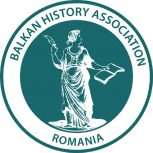
One of the indispensable concepts of political science is that of people, and when it comes to Turkish political life, it is possible to come across this concept more frequently. Spyros A. Sofos’ book, Turkish Politics and the People, which is the subject of our evaluation, attempts to explain the intellectual sources of the concept of the people, its meaning during the years of the single party rule and its transformation with the beginning of the multi-party regime in a period of approximately 100 years starting from the foundation years of the Republic of Turkey to the present day. In this respect, the book has subjected the concept of people to a descriptive content analysis within a certain historical process.
In addition to the concept of people (halk), the concepts of nation (ulus) and nation (millet) have also been frequently discussed during the transition from the disintegrating Ottoman Empire to a state based on the nation-state system. These concepts are used interchangeably even today. Although the author explains very well that the concepts of people (halk) and nation (ulus) are different from each other, in some places the concepts of nation (ulus) and nation (millet) are used to cover the same concepts. Considering the Ottoman-Islamic tradition, the concept of nation (millet) in question is a concept categorized under religious references. This characteristic of the concept of nation (millet) was in the form of the millet system in the Ottoman Empire. The concept of nation (ulus), on the other hand, has its origins in Western Europe and has built a more secular social structure. It would have been more appropriate for the author to indicate this subtle difference between the concepts of nation (ulus) and nation (millet).
In the post-War of Independence period, the founding cadres of the Republic realized that the idea of a pluralist nation was not possible and resorted to a series of practices. It is appropriate that the author frequently mentions both the intellectual infrastructure of the methods used by the founding cadres of the republic and the practices of the countries in Europe that resorted to the same practices. In particular, Carl Schmitt’s friend-enemy dualism and Gustave Le Bon’s elitist approach to the masses are key concepts that should be used to explain the multi-party life in Turkey, which was to begin in the 1950s. During the single-party era, the number of groups that the early republic saw as potentially dangerous and therefore hostile was considerable. It is natural that the new state labelled non-Muslim subjects and the legacy of the Ottoman Empire as the other. However, the Kurdish communities living in the Eastern Anatolia region and the religion of Islam, which was the belief of most of Anatolia, could not escape being the other. The historical ruptures that the author refers to in order to explain why the list of others in the early republic was so crowded are very important. For example, the Sheikh Said Rebellion, which the author mentions as a rupture, is one of the issues that occupies Turkish politics even today. In the midst of such ruptures, it can be considered quite normal for the founding cadres to stand over the non-homogenous communities living in Anatolian geography like a guardian or a father, to guide them to the right path and even to punish them when necessary. Le Bon’s elitist concept comes to the aid of the Republic in this regard. The Republic expressed this necessity both with the principle of populism and the principle of ‘‘for the people, despite the people’’.
In the period from the multi-party process in Turkey to the present day, many changes have occurred in the meaning of the concept of the people (halk) and in the nature of politics. In order to explain this transformation, the approaches used by the author to define the concept of the people at the beginning of the book have the potential to explain Turkish politics. Expressions such as ‘‘people revolution’’ or ‘‘people movement’’, which have been used by many political parties to come to power since the 1950s, when the single-party life ended, are now empty. The absence of any mechanism to prevent such developments or to limit the masses makes the understanding of democracy equivalent to populism. The importance of not confusing the masses who take democratic actions with the claim of rights, as the author states at the beginning of the book, with the mass movements that degenerate democracy emerges here. Because with the transition to multi-party life, the people the author refers to have become the victims of populism. The subtle difference between the pursuit of democratic rights and populism is one of the most important arguments for understanding the multi-party political system in Turkey. We can also state that all military coups and memorandums in Turkey stem from the opposition to populism expressed by the author. Because the military and civilian bureaucracy, which adopted an elitist approach, always found an unbridled popular movement dangerous and saw no harm in seizing power when necessary.
Ahmet Tunç and Serhat Başaran, Çanakkale Onsekiz Mart University, Faculty of Politicial Science
